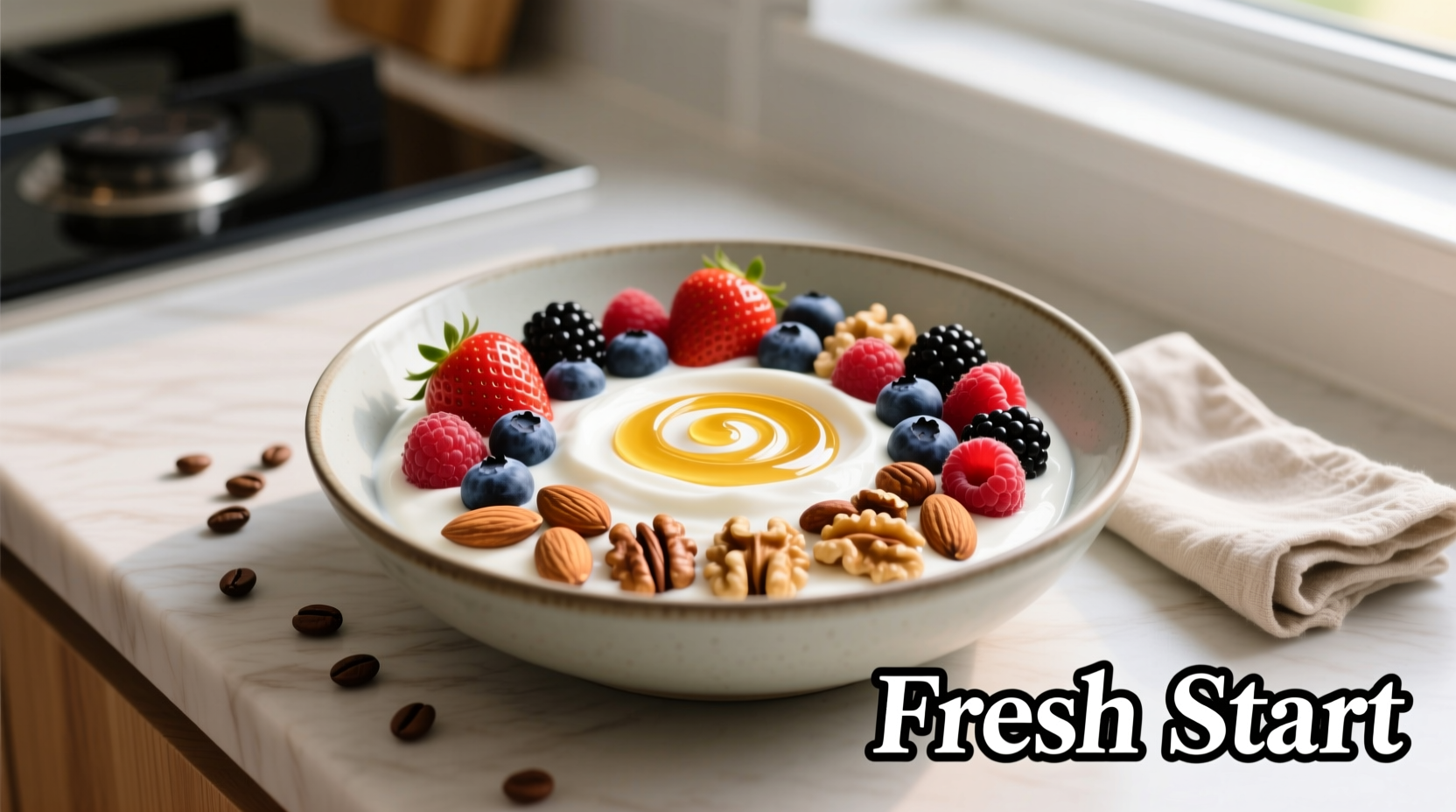The best breakfast foods combine protein, fiber, and healthy fats to stabilize blood sugar and provide sustained energy. Top evidence-based choices include Greek yogurt with berries and nuts, oatmeal with chia seeds and fruit, eggs with vegetables, avocado toast on whole grain bread, and smoothies with protein powder and leafy greens.
Starting your day right matters more than you might think. According to research from the American Heart Association, people who eat balanced breakfasts maintain healthier weights, have better concentration, and make smarter food choices throughout the day. But with so many options and conflicting advice, how do you know what truly qualifies as a "good" breakfast?
The Science Behind Morning Nutrition
Breakfast nutrition science has evolved significantly over the past two decades. Early research focused primarily on calorie counting, but modern understanding emphasizes nutrient timing and composition. A landmark 2019 review in Advances in Nutrition revealed that the combination of macronutrients matters more than total calories when it comes to morning meals.
| Nutrient | Minimum Target | Optimal Range | Best Food Sources |
|---|---|---|---|
| Protein | 15g | 20-30g | Eggs, Greek yogurt, cottage cheese, tofu |
| Fiber | 5g | 8-10g | Oats, berries, chia seeds, whole grains |
| Healthy Fats | 10g | 15-20g | Avocado, nuts, seeds, olive oil |
This nutrient balance helps regulate insulin response, preventing the mid-morning energy crash that sends many reaching for sugary snacks. The USDA Dietary Guidelines for Americans consistently emphasize whole foods over processed options for morning meals.
Your Breakfast Needs, Matched to Your Lifestyle
For the Time-Crunched Professional
When you've got five minutes to spare, focus on make-ahead options that deliver complete nutrition. Overnight oats prepared with Greek yogurt instead of milk provide 25g of protein per serving and maintain texture better. A Harvard School of Public Health study found that participants who ate yogurt-based breakfasts had 30% better blood sugar control than those consuming cereal-based options.
For Active Individuals and Athletes
Those with morning workouts need different fuel. Consuming 20-30g of protein within 45 minutes after exercise helps maximize muscle recovery. A smoothie with whey protein, banana, spinach, and almond butter delivers this while also replenishing electrolytes. Research from the Journal of the International Society of Sports Nutrition confirms that protein timing significantly impacts workout recovery.
For Weight Management Goals
Not all breakfasts support weight management equally. A 2021 American Heart Association statement highlighted that high-protein, high-fiber breakfasts reduce overall daily calorie intake by 15-20% compared to carbohydrate-heavy options. The key is avoiding hidden sugars—many commercial yogurt options contain as much sugar as dessert.
Breakfast Evolution: From Simple to Strategic
Breakfast recommendations have evolved dramatically:
- 1990s: Low-fat, high-carbohydrate focus (bagels, cereal, toast)
- 2000s: Introduction of protein awareness (egg white omelets)
- 2010s: Recognition of healthy fats importance (avocado toast trend)
- 2020s: Personalized nutrition based on activity level and metabolic needs
This progression reflects deeper understanding of how different nutrients interact with our circadian rhythms. Morning metabolism processes carbohydrates differently than evening metabolism, making certain foods more beneficial at breakfast.
Context Matters: When Certain Breakfasts Work Best
Not every "good" breakfast works for every situation. Understanding context boundaries helps you choose wisely:
- Before intense exercise: Lighter, easily digestible options like banana with almond butter
- After strength training: Higher protein combinations (30g minimum)
- During weight loss: Higher volume, lower calorie density foods (scrambled eggs with vegetables)
- For mental focus: Omega-3 rich options like chia pudding with walnuts
A 2019 study in Nutrients demonstrated that participants who matched their breakfast to their morning activity showed 40% better cognitive performance and sustained energy compared to those eating standard breakfasts regardless of context.
Putting It All Together: Sample Breakfast Framework
Instead of memorizing specific recipes, build your breakfast using this simple framework:
- Base: Whole grain or vegetable (oats, whole wheat toast, spinach)
- Protein: 20-30g (eggs, Greek yogurt, protein powder)
- Fiber: 1/2 cup fruit or vegetables (berries, banana, avocado)
- Healthy Fat: 1 tablespoon (chia seeds, nuts, olive oil)
This approach creates endless combinations while ensuring nutritional completeness. For example: whole grain toast (base) + scrambled eggs (protein) + sliced tomato (fiber) + avocado (healthy fat).

Common Breakfast Pitfalls to Avoid
Even seemingly healthy options can undermine your morning nutrition:
- Flavored yogurts: Often contain 20+ grams of added sugar
- "Healthy" granola: Can be calorie-dense with hidden fats
- Breakfast sandwiches: Frequently high in sodium and saturated fats
- Fruit juices: Lack fiber and cause blood sugar spikes
The key is reading labels carefully—many products marketed as "breakfast foods" don't meet basic nutritional standards. The FDA requires products to contain at least 10% of the Daily Value for key nutrients to make certain health claims, but many still fall short of optimal nutrition.
Your Breakfast Questions Answered
Understanding the science behind morning nutrition helps you make informed choices that support your health goals throughout the day. By focusing on nutrient balance rather than specific foods, you create sustainable habits that work with your lifestyle rather than against it.











 浙公网安备
33010002000092号
浙公网安备
33010002000092号 浙B2-20120091-4
浙B2-20120091-4